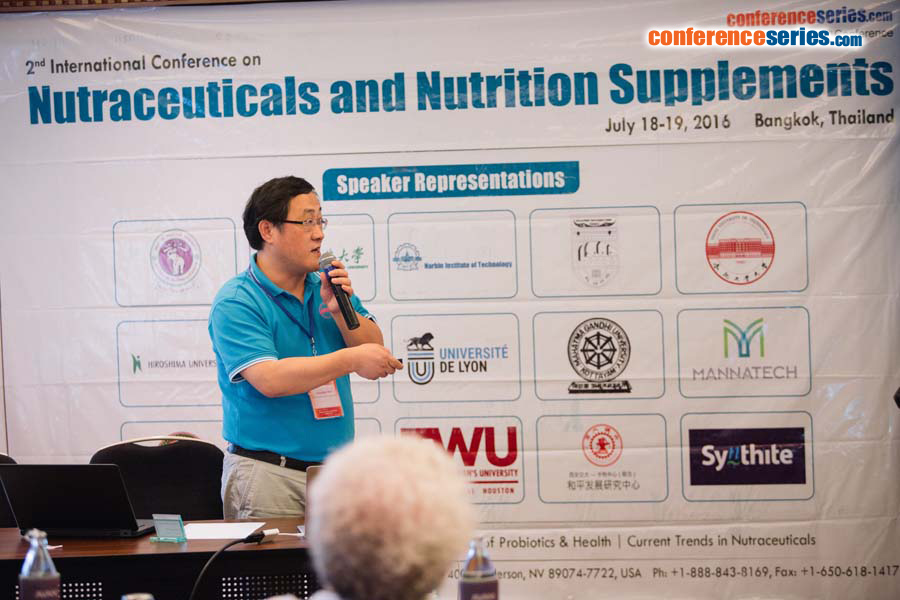
Zhao-Jun Wei
Hefei University of Technology, China
Title: The nutraceutical properties of polysaccharides sequential extracted from peony seed dreg
Biography
Biography: Zhao-Jun Wei
Abstract
Peony seed dreg, a byproduct of oil processing, is rich in many nutrients. However, this is always used as animal fodder and fertilizer. My laboratory has explored the possible use of nutrient-rich peony seed dreg as a functional food. To this end, Peony seed dreg polysaccharides (PSDP) were sequentially extracted using hot buffer (HBSS), chelating agent (CHSS) and dilute alkaline (DASS) followed by concentrated alkaline (CASS). The nutraceutical properties of the various polysaccharides fractions were investigated. The four PSDPs possessed simple composition and showed the characteristic absorptions for polysaccharides at 3600-3200 cm-1 and 3000-2800 cm-1. The functional group of four PSDPs displayed some slight differences. The results of melting point and enthalpy of four samples confirmed a good thermal stability. The emulsifying activity and emulsifying stability of four PSDPs exhibited dose-dependent response, HBSS with the highest emulsifying activity and CHSS with the longest emulsifying stability. Comparison among the antioxidant activities of four PSDPs, CASS showed highest abilities in the DPPH radical scavenging activity, reducing power and ABTS radical scavenging activity, HBSS exhibited the highest hydroxyl radical scavenging activity and CHSS displayed the higher chelating ability on ferrous ions than others. At a liquid-solid ratio less than 2.5% w/w in aqueous solution, the polysaccharides extracted from peony seed presented non-Newtonian shear thinning behavior and could be well described by the Cross model. The peony seed polysaccharides showed predominantly viscous responses (G’




